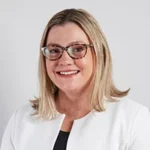Here’s what workplaces need to know
The NSW Government announced on 18 October 2023 that it is intending to introduce new laws for industrial manslaughter offences in workplaces.
What has prompted the new laws?
The proposed new laws have been prompted by a dramatic increase in the number of employees who have died while at work. In the last five years to 2022, 263 employees in NSW have died at work, a higher number than any other state in Australia.
The current state of play
Currently, employers who expose an employee to the risk of death through “gross negligence” may face imprisonment of up to five years in jail.
Unlike other states in Australia, NSW does not treat deaths of employees at work as manslaughter. This means that the penalties for a worker’s death at work in NSW are substantially lower than in other jurisdictions. In Victoria, an individual found guilty of workplace manslaughter faces fines of up to $16.5 million and up to 20 years in jail. In Queensland, individuals also face up to 20 years imprisonment.
What impact will the new laws have?
NSW is the last mainland state without an industrial manslaughter offence or legislation in parliament. The proposed laws are likely to bring NSW in line with Victoria and Queensland. They are designed to send a clear message to employers who place an employee’s life at risk of death, significantly increasing punishments for negligent employers.
In February 2023 the former NSW Government, along with other states and territories, agreed to amend model WHS laws to allow for jurisdictions to introduce industrial manslaughter.
The proposed increased penalties for employers mean that employers should continue to take a proactive approach to meeting WHS duties. They should continue to identify hazards and take steps to assess and control risks in the workplace including for visitors and contractors. Employers should also encourage a proactive safety culture.
The following recent cases and penalties show the importance of employers failing to undertake a proper risk assessment for employees:
SafeWork NSW v A1 Arbor Tree Services Pty Ltd and Anor [2023] NSWDC 256.
In this case, a 40-year-old worker was fatally injured when he was drawn into a woodchipper whilst handfeeding branches into it. The court found that A1 Arbor didn’t complete a risk assessment of the equipment. The equipment had several defects and there was little supervision of workers. Further, workers did not receive training to operate the equipment. Arbor Tree Service Pty Ltd was charged with a breach of the category 1 offence of the Work Health and Safety Act. On 14 July 2023, the defendant was convicted by the District Court and fined $2,025,000. The multimillion dollar penalty is the single largest court imposed fine for a business in NSW.
SafeWork NSW v Synergy Scaffolding Services Pty Ltd [2022] NSWDC 584.
In this case, a worker was fatally injured. Another worker sustained serious injury when a large section of scaffold collapsed on top of them at a construction project in Macquarie Park. Synergy Scaffolding Services Pty Ltd was charged with a breach of the category 1 offence of the Work Health and Safety Act. On 25 November 2022, the defendant was convicted by the District Court and fined $2,000,000.
What are the next steps?
The NSW Government has stated that it will begin consulting with employers and industry on the new laws and hopes to introduce new legislation in the first half of 2024. Meanwhile, SafeWork NSW will be engaging in an extensive consultation process, engaging WHS experts, business groups, unions, legal stakeholders and families whose family members have died while at work.
For more information in the impact of these proposed laws on your workplace, please contact Coleman Greig’s Employment & WHS team.














